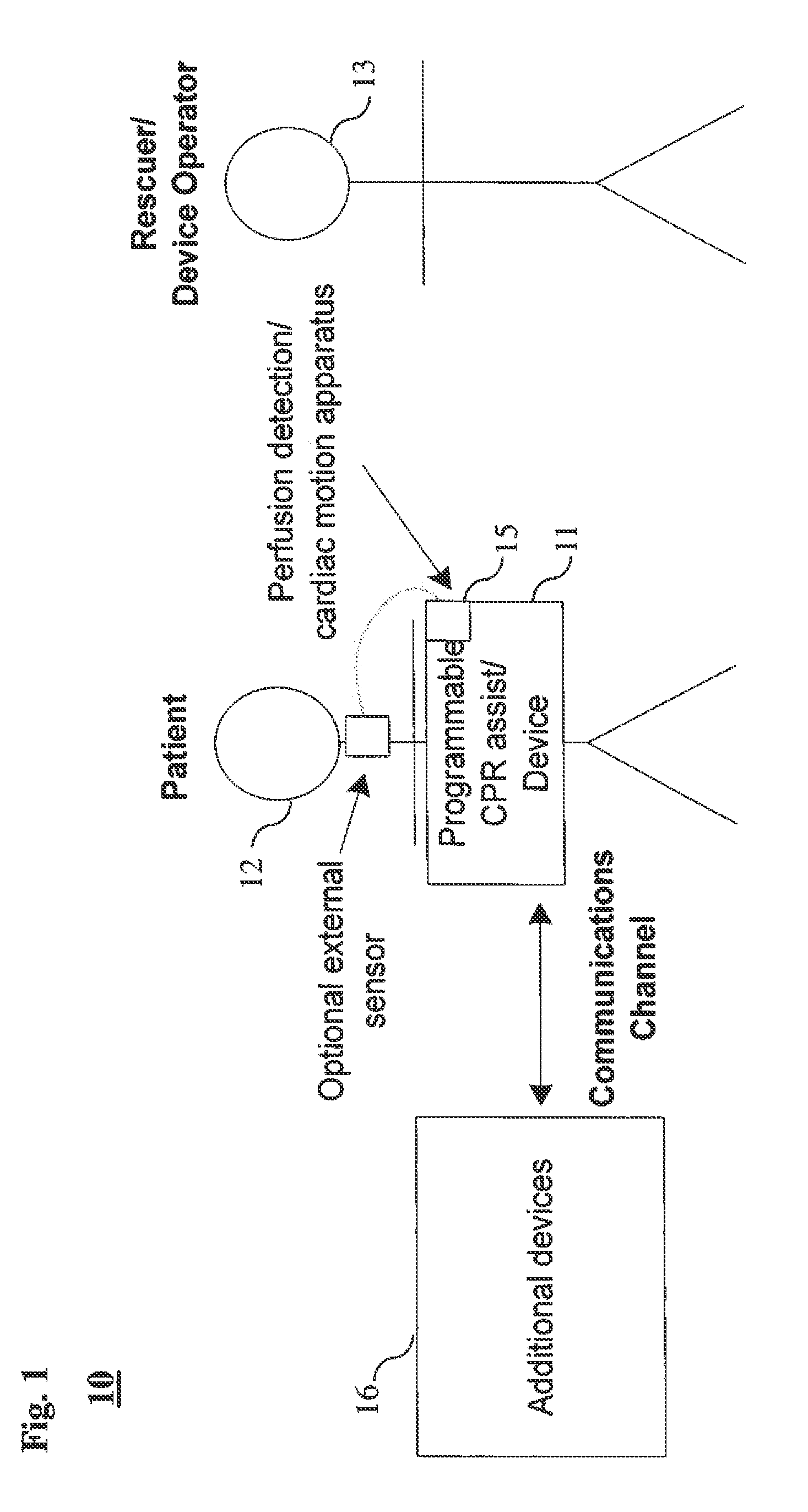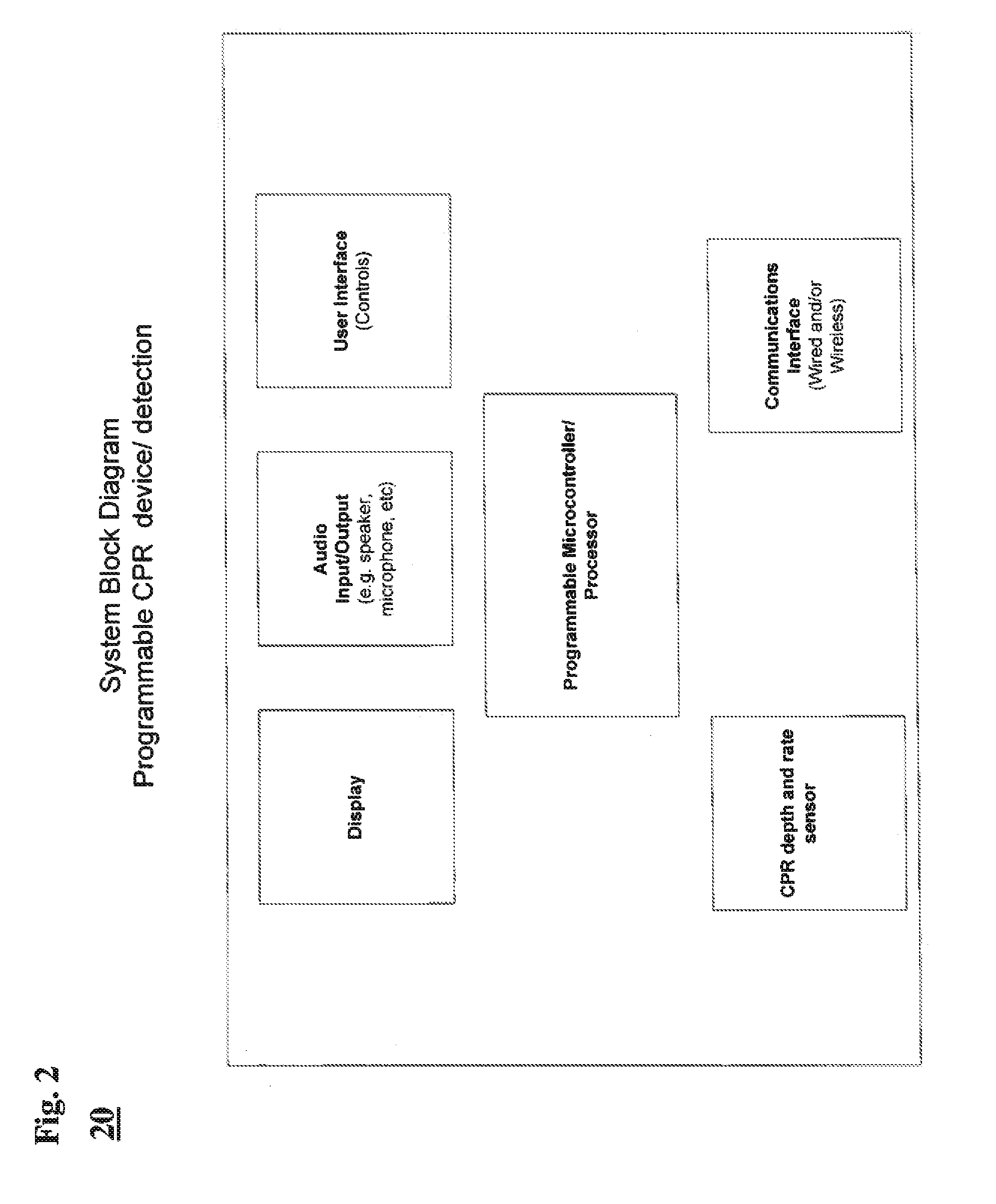Programmable cardiopulmonary resuscitation (CPR) detection device
a detection device and pulmonary artery technology, applied in the field of cpr feedback systems, can solve the problems of inability to communicate and corroborate in real time with other devices, including medical devices, and trained professionals often do not perform cpr correctly, so as to enhance the patient's responsiveness to defibrillation therapy and accelerate decision-making and therapy.
- Summary
- Abstract
- Description
- Claims
- Application Information
AI Technical Summary
Benefits of technology
Problems solved by technology
Method used
Image
Examples
Embodiment Construction
[0021]The following detailed description is merely exemplary in nature and is not intended to limit the invention or the application and uses of the invention. For example, a practical embodiment of the invention may be deployed in connection with CPR feedback device, an automatic or automated external defibrillator, a semi-automatic or semi-automated external defibrillator, a manual external defibrillator, patient monitoring systems, and possibly implantable defibrillator devices. Furthermore, there is no intention to be bound by any expressed or implied theory presented in the preceding technical field, background, brief summary or the following detailed description.
[0022]The invention may be described herein in terms of functional and / or logical block components and various processing steps. It should be appreciated that such block components may be realized by any number of hardware, software, and / or firmware components configured to perform the specified functions. For example,...
PUM
 Login to View More
Login to View More Abstract
Description
Claims
Application Information
 Login to View More
Login to View More - R&D
- Intellectual Property
- Life Sciences
- Materials
- Tech Scout
- Unparalleled Data Quality
- Higher Quality Content
- 60% Fewer Hallucinations
Browse by: Latest US Patents, China's latest patents, Technical Efficacy Thesaurus, Application Domain, Technology Topic, Popular Technical Reports.
© 2025 PatSnap. All rights reserved.Legal|Privacy policy|Modern Slavery Act Transparency Statement|Sitemap|About US| Contact US: help@patsnap.com



